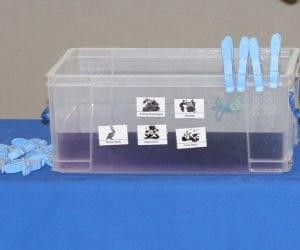A lot of our environmental history in the U.S. has been marked by legislative safeguards put in place to deal with crises. Think about the establishment of the Soil Conservation Service (1935) to prevent another Dust Bowl. Or the critical legislation of the early 1960’s and 1970’s to respond to poor air and water quality. (It wasn’t that long ago that we drove cars with leaded gas, daily smog blanketed Los Angeles, and Cleveland’s Cuyahoga River caught fire from chemical pollution!)
Earth Day really is a cause for celebration because its establishment marked a defining time in U.S. legislative history when it came to protecting the environment. The first Earth Day (1970) was also the year the U.S. Environmental Protection Agency was created (by President Nixon’s executive order, and then ratified by Congress). Soon after, Congress had passed the Endangered Species Act, Clean Water Act and fundamental expansions to the Clean Air Act and had banned the pesticide DDT. All of these laws improved public health and the environment.
Invite your students to explore our country’s environmental history using our interactive timeline at WorldPopulationHistory.org. Here’s how:
1. Display www.WorldPopulationHistory.org and point out the Environment Timeline at the bottom of the screen (the orange bar with the tree icon).
2. Ask students to hypothesize how human interactions with the environment have changed over the years. Have these interactions been positive or negative?
3. Divide students into small groups, distribute the Student Worksheet, and assign each group one of the following date ranges. a. 1 C.E. – 1800 b. 1801 – 1968 c. 1969 – 2000 d. 2001 – 2050. Have each group complete the Student Worksheet by investigating the Environment Timeline for their assigned date range. Ask each group to share their summary statement with the class.
You can also connect our environmental history with today’s news and lead a discussion with students on one or more of the following topics: Flint water crisis, U.S. involvement in the Paris Climate Agreement, proposed roll-back of automobile fuel standards, crumbling infrastructure affecting water quality.
Looking ahead, what do they think might show up on this Environmental timeline in the next 50 years? What role will regular citizen have in shaping those events? Discuss.




